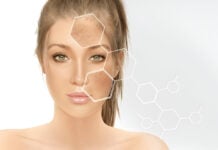Traveling to new places can be exciting but for your skin, it can also be a source of unfamiliar threats. From tropical climates to insect-infested areas, international travel often exposes people to dermatologic conditions they wouldn’t encounter at home. In recent years, dermatologists have reported a rise in travel-related dermatology cases, with patients returning from vacations or remote work abroad presenting with exotic rashes, bug bites, fungal infections, or even parasites.
Common Travel-Related Skin Conditions
Whether you’re hiking in the Amazon, relaxing on a beach in Thailand, or exploring the streets of Nairobi, skin problems can follow. Here are some of the most frequent issues seen in returning travelers.
1. Cutaneous Larva Migrans (Creeping Eruption)
Cause: Hookworm larvae (usually from infected animal feces in sandy or moist soil)
Appearance: Serpiginous, itchy red lines that slowly migrate under the skin, commonly on feet or buttocks
Where: Tropical beaches, especially in the Caribbean, Southeast Asia, and Africa
Treatment: Oral antiparasitics like albendazole or ivermectin clear the infection quickly (Caumes, 2000)
2. Tungiasis (Sand Flea Infestation)
Cause: Female sand fleas (Tunga penetrans) burrowing into the skin, typically the soles of the feet
Appearance: Painful white papules with a black dot in the center, often surrounded by redness and swelling
Where: Rural parts of Latin America, the Caribbean, and sub-Saharan Africa
Treatment: Surgical extraction, antiseptic cleaning, and prevention through closed footwear (Feldmeier et al., 2007)
3. Leishmaniasis (Protozoal Infection)
Cause: Bite from a sandfly infected with Leishmania parasites
Appearance: Persistent skin ulcers, plaques, or nodules, often on exposed areas like arms and legs
Where: Middle East, Central and South America, and North Africa
Treatment: Oral or intravenous antiparasitic medications depending on the strain and severity
4. Swimmer’s Itch (Cercarial Dermatitis)
Cause: Skin penetration by larval flatworms (cercariae) from infested freshwater lakes or ponds
Appearance: Itchy, red, pimple-like rash that appears within hours of swimming
Where: Freshwater bodies in both tropical and temperate regions
Treatment: Symptomatic relief with antihistamines and topical steroids
5. Tinea Corporis and Other Fungal Infections
Cause: Dermatophytes thriving in humid, sweaty conditions
Appearance: Ring-shaped red rashes with raised borders and central clearing
Where: Common in warm climates and among backpackers or hostel travelers
Treatment: Topical or oral antifungal medications
6. Insect Bites and Secondary Infections
Cause: Mosquitoes, bedbugs, and midges
Appearance: Itchy red welts, sometimes clustered or linear, which can get infected from scratching
Complications: Scratching can lead to impetigo, cellulitis, or abscesses, especially in tropical environments
Prevention: Use of insect repellents (e.g., DEET), wearing long sleeves, and using bed nets
When to Worry: Signs of Serious Skin Infections
While many travel-related skin issues are self-limiting, some require urgent medical attention:
- Persistent ulcers or nodules not responding to over-the-counter creams
- Spreading redness, fever, or pus, suggesting secondary bacterial infection
- Systemic symptoms like swollen lymph nodes or fatigue
- Rashes associated with fever, such as dengue or Zika (both viral illnesses with dermatologic manifestations)
Consult a dermatologist or travel medicine specialist if any of these signs are present.
Prevention Tips for Travelers
To minimize dermatologic risks while traveling:
- Avoid barefoot walking, especially on beaches or in rural areas
- Use insect repellent and sleep under mosquito nets in endemic regions
- Wear breathable clothing and change out of sweaty clothes quickly
- Avoid swimming in stagnant or freshwater lakes unless confirmed safe
- Pack a small dermatology travel kit with hydrocortisone cream, antifungal cream, antiseptic wipes, and antihistamines
- Stay up to date on travel vaccines and prophylactic medications, especially for tropical regions
Travel opens up new worlds, but it also exposes your skin to unfamiliar threats. From tropical parasites to heat-induced fungal infections, travel-related dermatology is a growing field that highlights the skin as an early warning system for global health concerns. By learning to prevent and recognize exotic rashes and parasitic infections, you can return home with just memories and souvenirs—not itchy surprises.
References
- Caumes, E. (2000). Itch in travelers. International Journal of Dermatology, 39(4), 236–244. https://doi.org/10.1046/j.1365-4362.2000.00882.x
- Feldmeier, H., Eisele, M., Van Marck, E., Mehlhorn, H., Ribeiro, R., & Heukelbach, J. (2007). Investigations on the biology, epidemiology, pathology and control of Tunga penetrans in Brazil: IV. Clinical and histopathology. Parasitology Research, 100(4), 413–421. https://doi.org/10.1007/s00436-006-0280-6
- World Health Organization. (2023). Leishmaniasis: Key facts. https://www.who.int/news-room/fact-sheets/detail/leishmaniasis
- CDC. (2024). Travelers’ Health: Skin conditions and parasites. https://wwwnc.cdc.gov/travel












